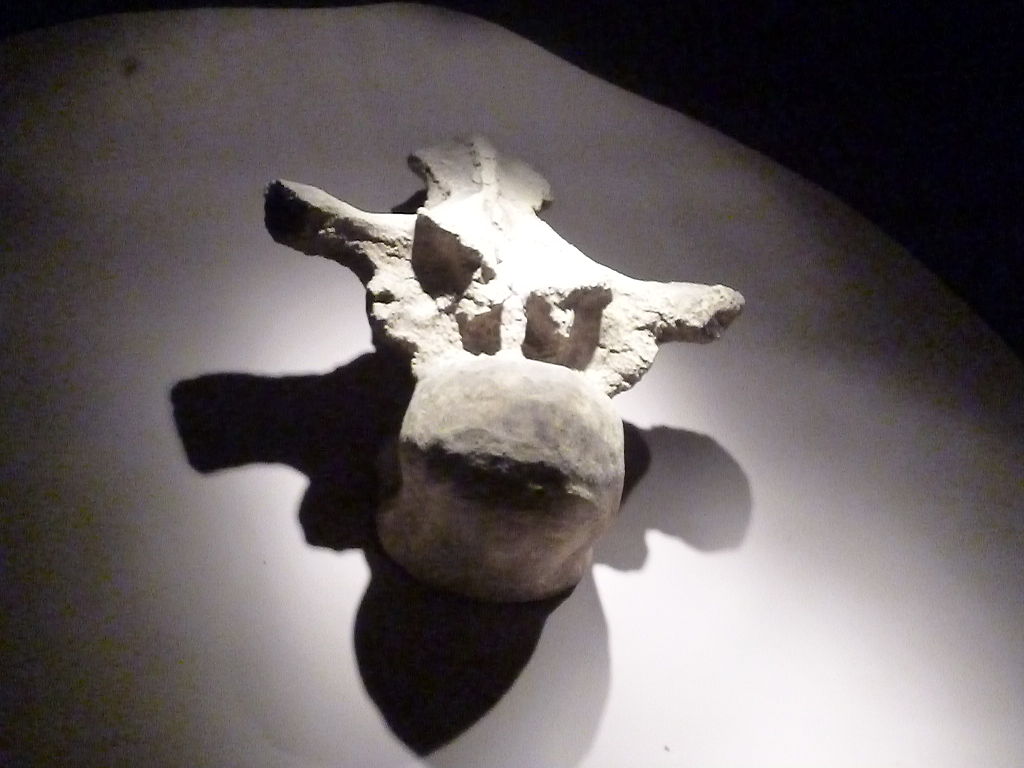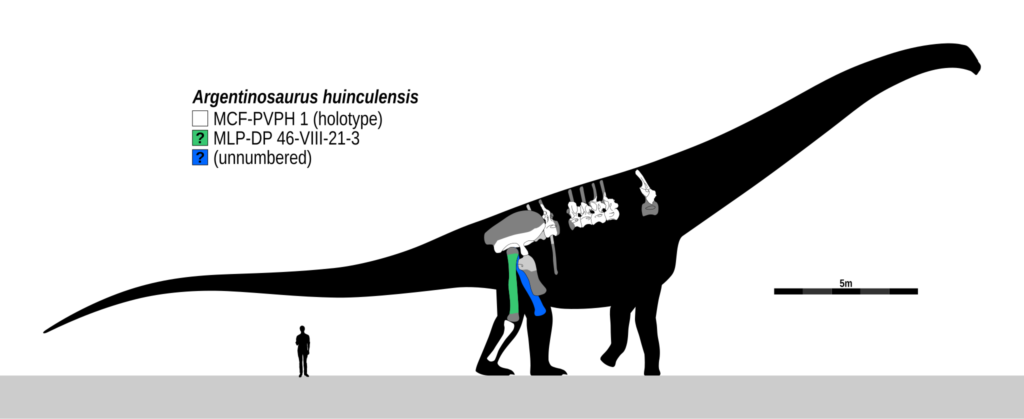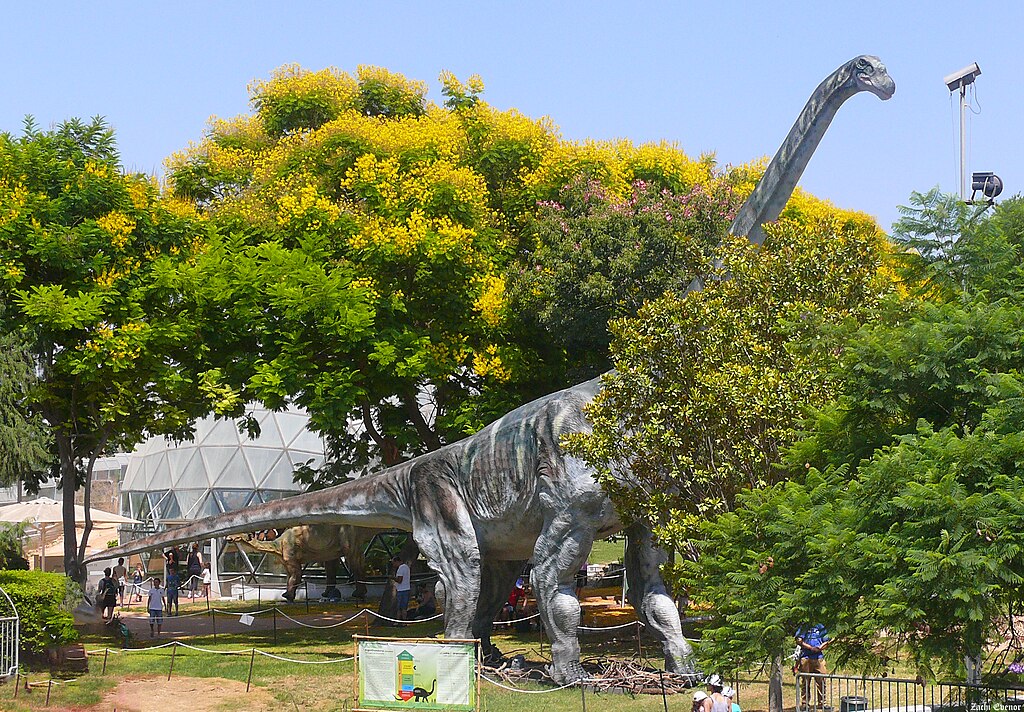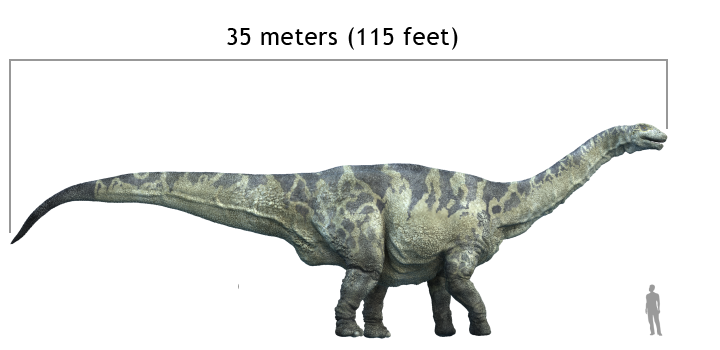Imagine a creature so massive that its footsteps would have literally shaken the ground, a behemoth that stretched longer than five school buses placed end-to-end, with a weight equivalent to fifteen adult elephants. This wasn’t a creature of mythology but a real dinosaur that once roamed our planet: the Argentinosaurus. Discovered in Argentina’s rich paleontological beds, this titanosaur sauropod has captured the imagination of scientists and dinosaur enthusiasts alike, representing what may be the upper limit of how large land animals could evolve. Its colossal size presents fascinating questions about biology, evolution, and the ancient ecosystems that supported such giants. Let’s explore the story of this remarkable prehistoric titan, from its discovery to what we’ve learned about its life in the Cretaceous period.
The Discovery of a Giant

The first remains of Argentinosaurus were discovered in 1987 by a rancher named Guillermo Heredia in the Río Limay Formation of Neuquén Province, Argentina. When he stumbled upon what he thought was petrified wood, he had no idea he had found vertebrae from one of the largest animals ever to walk the Earth. Paleontologist José Bonaparte led the formal excavation in 1989, where they uncovered several vertebrae, ribs, and a partial femur that hinted at the creature’s enormous proportions. The fossils were dated to the Late Cretaceous period, approximately 95-93 million years ago, placing this giant in a time when South America was an island continent with unique evolutionary pressures. This initial discovery was just enough material to establish a new genus and species, yet sufficient to indicate that paleontologists had found something truly extraordinary.
Naming the Titan of Argentina

The dinosaur was formally named Argentinosaurus huinculensis in 1993 by Bonaparte and colleague Rodolfo Coria. The genus name “Argentinosaurus” translates simply to “Argentine lizard,” honoring the country where it was discovered, while the species name “huinculensis” refers to the nearby town of Plaza Huincul. This naming convention follows a common pattern in paleontology, where animals are often named for their geographical discovery location and distinctive features. What makes this naming particularly fitting is that Argentina has become known as a hotspot for giant titanosaur discoveries, with several other massive species found in the region since Argentinosaurus was first described. The name has become synonymous with prehistoric gigantism and represents Argentina’s significant contribution to our understanding of the upper size limits of terrestrial animals.
Reconstructing a Colossus from Fragments

Remarkably, our understanding of Argentinosaurus comes from relatively fragmentary remains, making its size estimates both impressive and challenging. Paleontologists had to work with several vertebrae, ribs, a partial femur, and some minor fragments to estimate its overall dimensions. Using scaling methods and comparisons with more complete titanosaur relatives, scientists estimate that Argentinosaurus reached lengths of 30-40 meters (98-131 feet) and may have weighed between 60-100 metric tons. These calculations require careful consideration of bone proportions, muscle attachment sites, and comparisons with better-known relatives. The fragmentary nature of the fossil record means that size estimates continue to be refined as more fossils are discovered and analytical techniques improve. Despite these challenges, even the most conservative estimates place Argentinosaurus among the largest land animals ever to have existed.
Anatomy of a Super-Giant

Argentinosaurus possessed the classic body plan of sauropod dinosaurs, featuring a small head perched atop an extremely long neck, a massive barrel-shaped body, columnar legs, and an extended tail that likely served as a counterbalance. The recovered vertebrae reveal distinctive internal air spaces (pneumaticity) that would have lightened the skeleton while maintaining structural strength, a critical adaptation for an animal of such massive proportions. Its leg bones would have been among the largest and strongest of any land animal, necessary to support its tremendous weight. Like other titanosaurs, Argentinosaurus likely had relatively wide-set hips and shoulders, creating a broad stance that distributed its weight effectively. The recovered partial femur suggests a bone that, when complete, would have stood taller than most human beings—a sobering reminder of this animal’s extraordinary scale.
Competing for the Size Crown

While Argentinosaurus has long been considered the largest dinosaur, the title of “biggest ever” remains contested among several gigantic sauropods. Rivals include Patagotitan, another Argentine titanosaur known from more complete remains; Puertasaurus, represented by massive vertebrae; and Supersaurus and Maraapunisaurus (formerly Amphicoelias) from North America. Each of these titans presents its own case for the size record, with estimates often overlapping due to incomplete remains and different measurement methodologies. The competition has intensified in recent years with discoveries like Patagotitan mayorum in 2014, which is known from multiple specimens representing up to six individuals. What makes the size comparison particularly challenging is that different dinosaurs may excel in different dimensions—some being longer, others heavier or taller. Despite these competing claims, Argentinosaurus remains among the top contenders and continues to be the standard against which new giant discoveries are measured.
Life as a Giant Herbivore

Argentinosaurus, like all sauropods, was a strict herbivore, consuming massive quantities of vegetation daily to fuel its enormous body. Its feeding strategy likely involved minimal processing of food in the mouth—with no specialized teeth for chewing—instead relying on its extensive digestive system to break down tough plant material. Scientists estimate that an adult Argentinosaurus might have needed to consume hundreds of kilograms of plant matter daily, spending most of its waking hours feeding. Its long neck would have been advantageous for reaching vegetation at various heights, potentially allowing it to access food sources unavailable to other herbivores. This feeding strategy may have enabled Argentinosaurus to exploit food resources across a wide vertical range, from ground level up to perhaps 15 meters high, depending on how it positioned its neck. The creature’s enormous size would have also made adults virtually immune to predation, with only the young vulnerable to the large theropod dinosaurs of the time.
The Cretaceous Environment of Argentinosaurus

During the Late Cretaceous period when Argentinosaurus lived, Argentina was part of the island continent of South America, which had separated from Africa but had not yet connected with North America. The environment consisted of warm, seasonal forests and woodlands with diverse plant life including conifers, ginkgoes, cycads, and early flowering plants. The region experienced a generally warm climate with distinct wet and dry seasons, creating a productive environment that could support massive herbivores. Argentinosaurus shared its ecosystem with other dinosaurs, including the carnivorous Giganotosaurus, which at 12-13 meters long was one of the largest predatory dinosaurs ever discovered. The isolation of South America during this period contributed to the evolution of unique dinosaur fauna, including the exceptionally large titanosaurs like Argentinosaurus. This environmental context helps explain how such enormous animals could evolve and thrive in these ancient ecosystems.
Growth and Development: Becoming a Giant

From hatching to full size, Argentinosaurus underwent one of the most extreme growth trajectories of any known animal. Starting life from eggs that were likely about the size of a soccer ball, these dinosaurs would have grown from tiny hatchlings weighing just a few kilograms to fully grown adults of perhaps 70 tons or more. Studies of bone histology in related sauropods suggest rapid growth rates during youth, potentially adding several tons of mass annually during peak growth phases. This rapid growth would have been necessary to quickly move young animals out of the size range vulnerable to predation. Scientists estimate that Argentinosaurus may have reached sexual maturity after about 15-20 years, though it might have continued growing for several more decades. The combination of rapid growth, delayed sexual maturity, and indeterminate growth patterns likely contributed to the evolution of such extreme body sizes in these animals.
Locomotion and Movement Challenges

How did an animal as massive as Argentinosaurus actually move? This question has fascinated paleontologists and biomechanics experts, leading to computer models that simulate how such giants might have walked. These studies suggest that Argentinosaurus moved with slow, plodding steps at a maximum speed of perhaps 5-8 kilometers per hour. Its massive legs would have functioned like pillars, with relatively limited flexibility compared to smaller animals. Each step would have required tremendous energy expenditure, explaining why these animals likely moved only when necessary. Computer simulations indicate that the ground would have literally vibrated with each footfall, potentially creating seismic signals that could travel for kilometers. The creature’s turning radius would have been enormous, with the animal needing significant space to change direction—a constraint that likely influenced its movement patterns and habitat preferences.
Reproduction and Population Dynamics
Based on evidence from other sauropods, Argentinosaurus likely reproduced by laying numerous relatively small eggs in nest depressions or shallow pits. Each female might have laid dozens of eggs, possibly returning to the same nesting grounds year after year as seen in some modern reptiles. The small size of sauropod eggs (limited by the need for gas exchange through the shell) meant that hatchlings were tiny compared to adults—perhaps less than 1/1000th the mass of their parents. This extreme size disparity suggests minimal parental care, with hatchlings likely being precocial and able to fend for themselves shortly after hatching. The combination of many small offspring and high juvenile mortality would have been necessary to maintain population stability for such long-lived giants. Population densities were likely very low, with perhaps only a few individuals per square kilometer, given the enormous food requirements of each animal.
Evolutionary Significance

Argentinosaurus represents what may be the upper boundary of terrestrial animal size, making it significant for understanding evolutionary constraints. Its enormous size raises questions about the limiting factors for gigantism in land animals, including skeletal strength, cardiovascular efficiency, and metabolic demands. As a member of the titanosaur group, Argentinosaurus shows the culmination of evolutionary trends toward increasing size that began much earlier in sauropod evolution. These trends included the development of highly pneumatized skeletons, efficient bird-like respiratory systems, and simplified dentition that allowed for more efficient food processing. The extreme gigantism of Argentinosaurus may represent an evolutionary response to selective pressures such as predator avoidance or competition for food resources. Understanding these giants helps scientists establish the theoretical upper limits for land animal size and provides insight into the physical constraints that govern animal evolution.
Scientific Debates and Ongoing Research

Despite decades of study, Argentinosaurus continues to generate scientific debate regarding its exact size, posture, and biology. One persistent controversy concerns neck posture, with some researchers arguing that sauropods like Argentinosaurus held their necks more horizontally than traditionally depicted, significantly altering our understanding of their feeding habits and appearance. Another area of ongoing research involves refining weight estimates using more sophisticated computer modeling techniques that account for tissue density variations throughout the body. The fragmentary nature of the fossils has led to significant uncertainty ranges in size estimates, which new discoveries may help narrow. Additionally, researchers continue to investigate how such massive animals regulated body temperature, with some evidence suggesting they may have had elevated body temperatures despite not being true endotherms like mammals. These ongoing scientific debates highlight how much remains to be learned about these fascinating giants.
Cultural Impact and Public Fascination

Since its discovery, Argentinosaurus has captured public imagination as perhaps the largest land animal ever to exist, becoming a staple of dinosaur documentaries, museum exhibits, and popular media. Life-sized models of Argentinosaurus have become centerpiece attractions at major natural history museums worldwide, often requiring specially designed exhibition spaces to accommodate their enormous dimensions. The dinosaur has featured prominently in documentary series like BBC’s “Walking with Dinosaurs” and various educational programs that attempt to bring these prehistoric giants back to life through computer animation. For Argentina, the dinosaur has become a source of national pride and a symbol of the country’s rich paleontological heritage, attracting scientific tourism to the Patagonia region. The ongoing fascination with Argentinosaurus demonstrates how extreme examples of nature’s diversity continue to inspire wonder and scientific curiosity across generations and cultures.
Conclusion

Argentinosaurus stands as a magnificent example of evolution’s capacity to produce extraordinary creatures. Despite being known from fragmentary remains, this colossal dinosaur has transformed our understanding of the upper limits of terrestrial animal size. From its discovery in the fossil-rich regions of Argentina to its ongoing role in scientific research and public education, Argentinosaurus continues to captivate our imagination and challenge our understanding of biology. As paleontological methods advance and potentially more complete specimens are discovered, our picture of this prehistoric giant will undoubtedly become clearer. Until then, Argentinosaurus remains the standard-bearer for prehistoric gigantism—a testament to the extraordinary creatures that once ruled our planet long before humans arrived to marvel at their fossilized remains.



